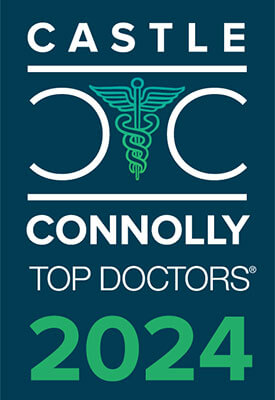What are Pulmonary Embolism and Post Thrombotic Syndrome?

Leg Blood Clots: Understanding Deep Vein Thrombosis
Deep vein thrombosis (DVT) is a prevalent vascular condition affecting over 350,000 individuals in the United States annually. This medical concern arises when a blood clot forms in one of the prominent deep veins of the leg, obstructing blood circulation.
The consequences of DVT extend beyond localized discomfort, leading to severe conditions such as pulmonary embolism (PE) and post-thrombotic syndrome (PTS).
Pulmonary Embolism (PE): A Potentially Fatal Complication
One of the most critical complications associated with DVT is pulmonary embolism (PE). When a blood clot dislodges and travels to the lungs, it can have life-threatening consequences. PE presents with sudden, acute pain and may manifest as swelling or warmth in the affected leg.
Dr. Alan Benvenisty, MD, warns that PE can be fatal without prompt intervention. Recognizing the signs of DVT and seeking immediate medical attention is crucial in preventing the progression of pulmonary embolism.
Post-Thrombotic Syndrome (PTS): Long-Term Consequences of DVT
DVT can have lingering effects in the form of post-thrombotic syndrome (PTS). This condition arises due to deep vein thrombosis and manifests as persistent pain, swelling, fatigue, and a sense of heaviness in the affected leg.
Dr. Benvenisty emphasizes the importance of addressing DVT promptly to minimize the risk of developing PTS and enhance overall patient outcomes.
Thrombophlebitis: A Closer Look at Superficial Blood Clot Inflammation
In addition to PE and PTS, thrombophlebitis is another condition related to DVT. This condition occurs when a blood clot causes inflammation and pain, affecting veins close to the skin’s surface.
Superficial thrombophlebitis may present as a red, cord-like knot below the skin. However, when deeper veins within the leg are affected, swelling and tenderness may result. Dr. Benvenisty emphasizes that while superficial thrombophlebitis may resolve independently, there is a risk of infection and tissue damage, especially when blood flow to deeper veins is compromised.
Risk Factors and Prevention
Several factors increase an individual’s risk of developing thrombophlebitis, including certain cancers, estrogen use (birth control), pregnancy, obesity, smoking, a family history of blood clots or poor circulation, and catheters in central veins.
Minimally Invasive Treatment: A Beacon of Hope
Dr. Alan Benvenisty, MD, offers cutting-edge treatments for DVT, including pharmacomechanical catheter-directed thrombolysis (PCDT). This minimally invasive procedure utilizes a catheter-mounted device to inject a clot-dissolving drug directly into the blood clot, breaking it up and removing fragments.
PCDT aims to prevent PE and reduces the likelihood of developing PTS. Dr. Benvenisty’s expertise in such innovative techniques allows for outpatient treatment, prioritizing patient comfort and expediting recovery.
Recognizing the signs of DVT and seeking timely intervention can be life-saving. Dr. Benvenisty’s commitment to utilizing state-of-the-art treatments ensures that patients with vascular leg conditions receive the highest quality care.
To schedule an appointment and prioritize your vascular health, contact Dr. Benvenisty’s office on Amsterdam Avenue today.
Posted on behalf of
440 West 114th St, Second Floor
New York, NY 10025
Phone: (212) 523-4706
Monday & Friday 9:00 AM – 5:00 PM







